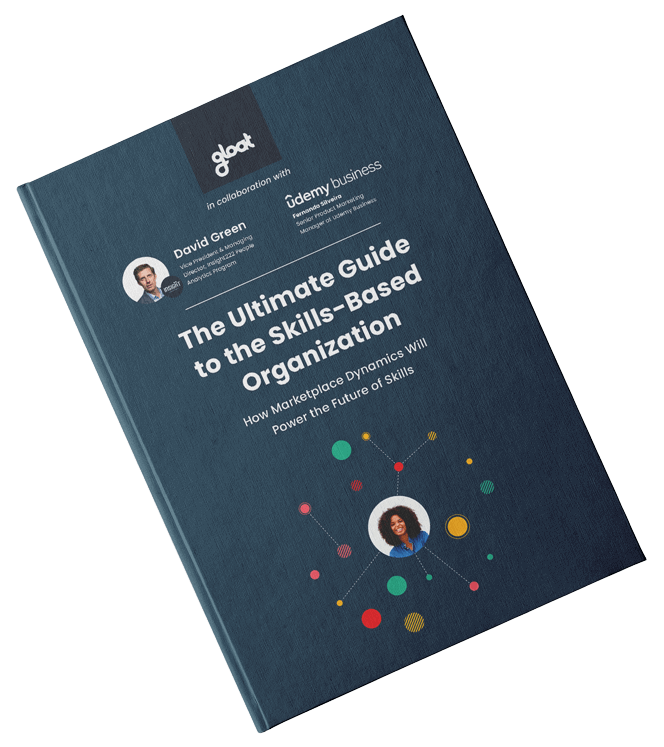Everything you need to know about skills management
Learn why leaders need to keep tabs on workforce capabilities

Skills are quickly becoming the dominant word in every talent management discussion—and for good reason. According to Deloitte, skills-based organizations are 107% more likely to place talent effectively and 98% more likely to retain high performers than their counterparts that rely on job-based operating models.
While many companies are eager to tap into the benefits associated with becoming a skills-based organization, most businesses are encountering some serious challenges along the way. Nearly 1 in 2 business executives believe legacy practices are holding their skills efforts back and only 20% think they’re ready to tackle the challenges associated with this transformation.
Rather than relying on outdated systems and processes, leaders must embrace new tools and mindsets that provide full visibility into the capabilities their people have to offer. Fortunately, there’s a new generation of AI-powered skills management software that’s designed to do just that.
What is skills management?
Skills management describes the practice of understanding, building, and deploying people and their skills. The most impactful strategies identify the competencies that a role requires, the capabilities that an employee possesses, and any discrepancies between the two.
Although it might sound simple, keeping track of employees’ skills is challenging because people are always learning new competencies. At the same time, every worker brings knowledge from their past professional experiences that managers may not be aware of because it falls outside of their current job scope. Rather than making educated guesses about who might know what, leaders are harnessing skills management software to gain visibility into the knowledge their workforce has and the skills they need to acquire.
In the past, companies that wanted to leverage technology to manage skills often purchased repositories, used databases, or hired consultants to build a framework for mapping skills and jobs. However, technological innovation has paved the way for a new generation of skills management tools that harness AI to automate this process and generate more real-time data on workforce skills.
Why is skills management important?
As knowledge gaps widen and the competition to acquire in-demand expertise heats up, developing a meaningful skills management strategy is becoming a prerequisite for business success. From promoting diversity and inclusivity to enhancing efficiency, research shows that skills-based organizations enjoy a widespread array of business advantages. To reap these benefits, companies must first prioritize skills management to ensure leaders have a comprehensive understanding of the capabilities their workforce has and how to best leverage them.
Once executives are equipped with a complete picture of workforce skills, they can make strategic decisions about how to reallocate talent as priorities change and new challenges emerge. A 360-degree view of skills also enables leaders to identify where knowledge gaps lie so they can create upskilling and reskilling initiatives to address shortages before they snowball into bigger problems.
5 steps to implementing an effective skills management strategy
If you’re interested in upgrading your approach to skills management, here are 5 steps to get started:
#1. Create a single source of truth for workforce skills
Traditionally, it’s been challenging for leaders to gain a bird’s eye view of workforce capabilities because skills information is typically siloed into a few different HR systems. Most taxonomies are also outdated, leading to talent strategies that may not address an organization’s actual needs.
Rather than settling for this subpar understanding of workforce skills, companies are harnessing AI-powered tools like Gloat’s Skills Foundation to gain visibility into all of their people’s capabilities. These systems are updated in real-time and pull from an employee’s LinkedIn profile or CV, in turn capturing the full range of knowledge and experience they’re bringing to the table.
#2. Make sure job architectures are up to date
While job architectures are often considered to be the backbone of an organization, manual ones quickly become outdated and often fail to capture the full breadth of employees’ skills. That’s why leaders who are looking to take skills management to the next level are turning to AI-powered job architecture tools to help them identify roles that may need to be discontinued, as well as positions that are on the rise. Armed with these insights, executives can look beyond business units and job codes and deploy talent to projects and tasks at the skill level.
#3. Understand how workforce skills stack up against the competition
Since today’s talent landscape is hyper-competitive, leaders need insights to understand exactly how their workforce’s skills stack up against others in the market. Skills management software should help executives understand the market value of a job and identify whether a capability is on the rise or on the decline. Some systems even provide insights into how the competition is positioning their jobs so businesses can pivot ahead of the curve and make informed L&D decisions to prioritize skill development effectively.
#4. See employees’ skills at a glance
Beyond viewing the skills that an entire workforce possesses, the best skills management strategies also enable leaders to assess capabilities at the individual level. Skills profiles give executives a singular view that captures all of an employee’s skills, abilities, and experiences.
It might also include a summary of their work experience and certifications, as well as technical skills and other relevant information that highlights their expertise. As leaders begin restructuring jobs or considering ways to move talent from outdated positions to high-priority roles, skills profiles offer a skills-based view of how to build a deployment plan.
#5. Create ongoing opportunities to hone new skills
Once executives begin harnessing skills management software to identify existing knowledge gaps, it’s up to them to devise pathways to bridge these shortages. The most effective training and development approaches include both content-based L&D courses as well as experiential learning opportunities that give employees the chance to put lessons into practice.
Many companies are turning to talent marketplaces to democratize access to career development opportunities. The platforms generate suggestions for projects, gigs, full-time roles, and mentorships based on an employee’s skills and career goals.
To learn more about what it takes to put skills at the center of every initiative, check out our guide to becoming a skills-based organization.





